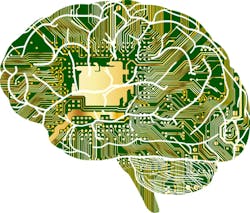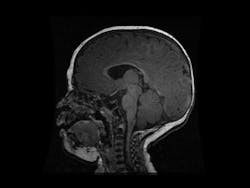Artificial intelligence is the fodder of much science fiction. Now it’s real, evolving, and central to real-life stories. It’s in the medical world where Artificial Intelligence (AI) went from an imaginary idea to real-world use. Developments are moving faster than expected.
Its first iterations weren’t powerful enough to be clinically useful; AI started out with simple pattern recognition by computers. Programmers would “teach” algorithms to generate certain output variables as functions of input variables that were fed to them. Then “neural nets” came along, layers of simulated neurons that were each algorithms unto their own, being fed inputs that caused them to strengthen or weaken the connections between them. But due to the limitations of the hardware, neural nets could only consist of a tiny number of layers. With the advent of higher-powered technology (namely graphics processing units, or GPUs), programmers can layer almost as many neural net layers as they want and program them in parallel. This enables a type of AI known as “deep learning.” 19, 20
Deep learning works by filtering vast quantities of data through many layers of neural networks that act like a series of filters to produce outputs of greater and greater accuracy11. It has an advantage over previous AI in that deep-learning algorithms can use data to fill in missing parameters rather than human input12. That’s why the more data they’re fed, the smarter they get.
Deep learning has the tech community as excited about AI as ever. Google, Apple, and Microsoft have all jumped onboard. But AI could be useful for more than just developing Siri13; it may bring about a new, smarter age of healthcare.
For instance, a team of American researchers used AI to aid detection of autism in babies as young as six months1. This is crucial because the first two years of life see the most neural plasticity when the abnormalities associated with autism haven’t yet fully settled in. This means that earlier intervention is better, especially when many autistic babies are diagnosed at 24 months. While previous algorithms exist for detecting autism’s development using behavioral data, they have not been effective enough to be clinically useful1. This team of researchers sought to improve on these attempts by employing deep learning. Their algorithm successfully predicted diagnoses of autism using MRI data from babies between six and 12 months old. Their system processed images of the babies’ cortical surface area, which grows too rapidly in developing autism. This smarter algorithm predicted autism so well that clinicians may now want to adopt it.
But human ailments aren’t just physical; our minds need medical attention, too. AI may be able to help there as well. Facebook is beginning to use AI to identify users who may be at risk of suicide14, and a startup company just built an AI therapist apparently capable of offering mental health services to anyone with an internet connection18.
The future holds many more possibilities for AI to revolutionize healthcare. Microsoft sees its potential in identifying and even re-programming cancerous cells, employing a system analogous to the process that computers use to scan for bugs.10, 16 Microsoft also envisions wearable sensors that use deep learning to foresee medical problems5, smarter virtual reality to help disabled people improve their perceptual abilities15, and artificially intelligent visual analysis of CT-imaged tumors16.
Hopefully, human recruitment of smart technology for automating healthcare will lead to a smarter and more efficient healthcare system for all.
References
2. http://onlinelibrary.wiley.com.ezp-prod1.hul.harvard.edu/doi/10.1111/j.1467-8624.2012.01870.x/full
4. http://www.techworld.com/news/personal-tech/ibm-watson-assist-cancer-doctors-3346883/
5. https://www.technologyreview.com/s/513696/deep-learning/
7. http://www.alderhey.nhs.uk/alder-hey-childrens-hospital-set-to-become-uks-first-cognitive-hospital/
8. https://www.youtube.com/watch?v=l4Qibrui-2w&feature=youtu.be
9. http://www.nature.com/news/computer-science-the-learning-machines-1.14481
10. http://www.businessinsider.com/microsoft-research-peter-lee-healthcare-next-2017-2
11. https://devblogs.nvidia.com/parallelforall/deep-learning-nutshell-core-concepts/
12. http://www.computervisionblog.com/2015/03/deep-learning-vs-machine-learning-vs.html
13. http://mashable.com/2016/06/13/siri-sirikit-wwdc2016-analysis/#chtvLf_QYiqH
14. http://www.bbc.com/news/technology-39126027
15. https://www.weforum.org/agenda/2016/12/the-future-of-ai-heres-what-microsoft-researchers-think
16. http://www.theverge.com/2016/9/20/12986314/microsoft-ai-healthcare-project-hanover-cancer
19. http://www.computervisionblog.com/2015/03/deep-learning-vs-machine-learning-vs.html
20. Special thanks to software engineer Nikhil Singhal for help with the explanation of AI’s evolution.




